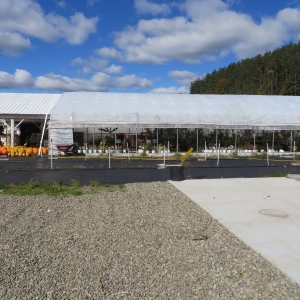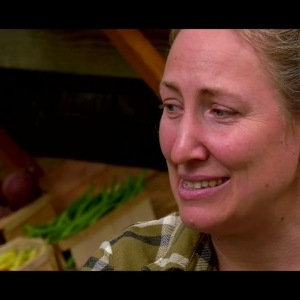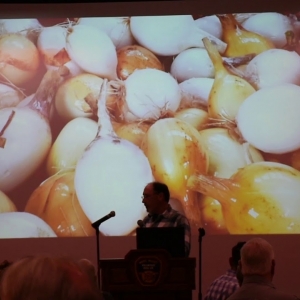Other Ag News: Congress Wants Local Food Back on the Menu
While global supply chains have brought year-round abundance to families at the grocery store, it has come at a cost, particularly for small and mid-sized farmers right here at home. Consolidation of food distribution and retail has forced farmers to consider higher volume sales at lower prices, which can be difficult to consider while maintaining profits for small and mid-sized operations. However, with recent federal investments and local leadership, there has been a clear and growing desire among schools and food pantries to purchase fresh, nutritious foods from those very farms in their own backyards.
The concept of purchasing food locally with government funding is not new. However, a series of investments – beginning with the Farmers to Families Food Box Program – have spurred the development of regional food supply chains both within state borders and across state lines. This development has created stability and opened market opportunities for local businesses while bringing fresh, wholesome food to local communities. Understandably, this success has grabbed the attention of participating farmers, businesses, and food system stakeholders, in addition to the press, and most recently Congress.
Different bills, similar outcomesIn July 2025, two bipartisan bills introduced in the Senate and the House outline pathways to codify immensely popular and successful local food programs. Senators Jack Reed (D-RI) and Jim Justice (R-WV) introduced the Strengthening Local Food Security Act (S. 2338), and Representative Robert Bresnahan (R-PA-8), along with 10 of his colleagues, introduced the Local Farmers Feeding our Communities Act (H.R. 4782) the following week.
Each bill directs the US Department of Agriculture (USDA) to enter into cooperative agreements with state agencies, Tribal governments, and US territories, to provide them with funding to purchase and distribute local food to communities in need. While each program would funnel wholesome foods into food-insecure communities, the primary focus of each is to expand economic opportunities for small- and mid-sized farms, beginning and veteran farmers, while strengthening regional food networks.
The critical element of each of these bills’ potential successes is the cooperative agreement model. By empowering local and state entities to make the purchasing decisions:
- Farmers of all sizes can readily participate.
- Food dollars remain in the state, reaching areas often underrepresented in federal funding.
- Families receive fresh food that directly reflects their preferences and needs.
The two bills largely accomplish the same goal with slight variations in implementation directives. These differences are described below.
The Strengthening Local Food Security ActThe Senate bill would make non-competitive awards to States, Tribes, or territories based on need within the state, with Tribes first receiving 10% of total program funding. The eligible government agencies would be required to submit plans to USDA detailing partners responsible for implementation and the ways in which the program would grow the local food system while promoting food security. Agencies would be required to purchase all foods from local sources and at least 51% of foods from the target producers, which are defined as small and mid-size producers, beginning farmers or ranchers, veteran farmers and ranchers, and other underserved producers. These foods can be distributed to either food assistance programs or in school settings. In order to effectively administer programs, agencies could use up to 25% for program administration and technical assistance to producers, which includes supporting food safety compliance among producers. At least half of federal funding is made available to the agency before implementation, and the remainder at the midpoint of the agreement.
The Local Farmers Feeding our Communities ActIdentical to the Senate bill, the House bill would make non-competitive awards to States, Tribes, or territories based on need within the state, with Tribes first receiving 10% of total program funding. Agencies would be required to purchase only local, unprocessed, or minimally processed foods with at least 25% of those foods from small and mid-size producers, beginning farmers or ranchers, and veteran farmers and ranchers. These foods would be distributed to local food organizations to improve access to healthy and nutritious foods in communities. In the House bill, agencies would also have access to no more than 25% of their funding for program administration and technical assistance to producers, which includes supporting food safety compliance among producers, and to grow the local agricultural value chain. If program elements are not specified, it would be up to the discretion of USDA on implementation.
If either of these bills is included in a future Farm Bill, differences between them would need to be addressed by Agriculture Committee leadership.
Maple Wind Farm Richmond, Vermont Locally Tested and ApprovedFor more than 25 years, USDA has directed numerous pilot projects, created statutorily-directed local food programs, and explored ways to strengthen market channels between farms and kitchen tables. Each of them has had various forms of success, but none that could be assessed at a national scale.
One of USDA’s latest initiatives, the Local Food Purchase Assistance Program, utilized a cooperative agreement model, providing funding directly to states, Tribes, and territories to purchase local food for nutrition and food assistance programs. While the cooperative agreement model is not a new approach, to date, most federal nutrition programs provide foods to communities via USDA’s commodity procurement and distribution network.
By instead supporting localities and stakeholders on the ground to manage all food purchases, states and local communities have achieved undeniable success and significant economic impact:
- By December 2024, localities had purchased more than $400 million in new direct food purchases, which generated $747 million in economic activity.
- Local program design meant significantly fewer barriers for participation, compared to food purchases being made by USDA. Nearly 10,000 unique farmers – big and small- were able to participate. Localities purchased a wide variety of locally produced foods, such as fresh produce, meat, dairy, eggs, fish, and more.
- Many participating farmers were small, mid-size, or beginning farmers, and purchases allowed them to scale their operations, which led to hiring new employees and on-farm investments, such as cold storage, high tunnels, and other infrastructure.
Hamid Pezeshkian, the owner and operator of Flametree Farms in Vista, CA, shared “Thanks to reliable local purchasing agreements, we’ve been able to reinvest into improving our irrigation system, and planting a few new fruit trees; we’ve also been able to get the entire orchard covered with fresh native mulch which should help in organically improving the soil fertility and fruit quality this season.”
Sharifa Tomlinson, the owner of Arrowrock Farm in Ohio, explained the magnitude of their ability to scale, “The reason why Ohio CAN is a great source for us and for us financially is one, we can sell a lot of chickens at one time which brings us in a little bit more financial support and a stream of revenue. Because of CAN, I was able to grow my operation. We started off with raising 30 meat chickens a year…and this year we’re up to 400 at any given time.”
Securing the future of local food systemsThe local food programs laid out in the Strengthening Local Food Security Act and the Local Farmers Feeding our Communities Act would create new, reliable markets for farmers while better connecting them with consumers and families in their communities. These investments will catalyze and strengthen a burgeoning local food sector that can expand beyond federal nutrition programs.
But in order to succeed, Congress must adequately invest in local food economies, and not just commodity markets. Congressional members need to hear how local foods are important to your business, health, and community well-being.
Click here to ask for your Congressional Member’s SupportThe post Congress Wants Local Food Back on the Menu appeared first on National Sustainable Agriculture Coalition.
Signup for the Ag Newsletter
Get the freshest farm news, events and updates from in and around Cattaraugus County, NY at least once a month! Go signup!
Other ways to stay connected:
Get Involved in Farming
Resources for Starting a Farm in Cattaraugus County
Profile of Cattaraugus County soils
Agriculture Career Exploration
Questions about farming? Find out Who to Call











